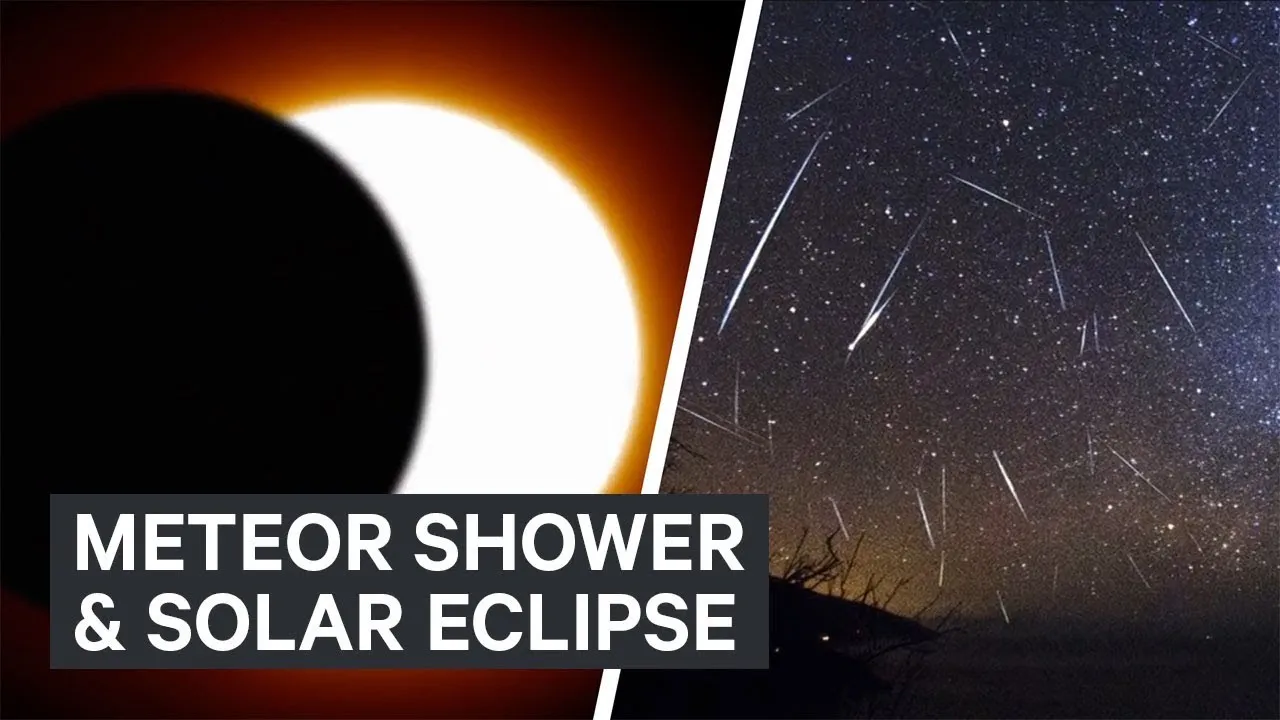Welcome, fellow sky enthusiasts!
Today, we embark on a cosmic journey, exploring the wonders that adorn our night sky – from meteor showers that paint trails of light to the captivating dance of eclipses.
Join me as we unravel the mysteries of these celestial events and learn how to witness the magic unfolding above.
Meteor Showers – Nature’s Fireworks
Let’s kick off our celestial adventure with meteor showers – nature’s own version of fireworks.
1. Shooting Stars 101 – What Are Meteor Showers?
Meteor showers occur when Earth passes through the debris left by comets.
As these particles enter our atmosphere, they burn up, creating streaks of light we commonly know as shooting stars.
2. Celestial Calendar – Key Meteor Showers to Watch Out For:
Explore the annual meteor shower calendar, featuring gems like the Perseids, Geminids, and the awe-inspiring Draconids.
Eclipses – Cosmic Alignments and Shadows
Eclipses, those rare cosmic ballets where celestial bodies align and shadows play, are next on our cosmic agenda.
1. Sun, Moon, Earth Tango – Solar and Lunar Eclipses Defined:
Solar eclipses occur when the moon passes between the sun and Earth, casting a shadow on our planet.
Lunar eclipses, on the other hand, unfold when Earth’s shadow falls on the moon.
2. Where and When – Planning Your Eclipse Viewing:
Discover the best spots and times to witness these celestial events. Hint: Some destinations offer front-row seats to eclipse extravaganzas.
Planetary Alignments – Dance of the Planets
Now, let’s shift our gaze to the planets – the celestial wanderers that grace our night sky.
1. Starry Dance Partners – How Planets Align:
Planetary alignments occur when planets seem to cluster together in the night sky due to their orbits.
Witness stunning displays like the “Great Conjunction” of Jupiter and Saturn.
2. Spotting Planets – A Guide for Night Sky Navigation:
Armed with a simple stargazing app or chart, you can easily identify and track planets as they traverse the celestial canvas.
Supermoons – The Larger-Than-Life Lunar Display
Supermoons, where the moon graces us in its full splendor, deserve a spotlight of their own.
1. Lunar Marvel – What Makes a Supermoon Super?
A supermoon occurs when a full moon coincides with its closest approach to Earth, appearing larger and brighter than usual.
2. Photographing the Supermoon – Tips for Lunar Paparazzi:
Capture the breathtaking beauty of a supermoon with some handy tips for lunar photography.
Comets – Celestial Nomads with Spectacular Tails
Our cosmic journey wouldn’t be complete without a glimpse into the fascinating world of comets.
1. Cosmic Snowballs – Decoding the Anatomy of Comets:
Comets are icy bodies that release gas and dust as they approach the sun, creating dazzling tails that can span across the night sky.
2. Comet Watching – How to Catch a Comet’s Performance:
Keep an eye on the night sky alerts, as comets make sporadic appearances. Witnessing one can be a once-in-a-lifetime experience.
UFOs – Unveiling the Mystery
UFOs, the elusive unidentified flying objects, often stir our imaginations. Let’s take a grounded approach to understanding these celestial mysteries.
1. UFOs Explained – Separating Fact from Fiction:
While some UFO sightings remain unexplained, many can be attributed to natural phenomena, satellites, or man-made objects.
2. Night Sky Observations – Enhancing UFO Sightings Understanding:
Equip yourself with knowledge about celestial phenomena to distinguish between UFOs and earthly wonders.
Conclusion – The Cosmic Symphony Continues
As we conclude our celestial journey, let’s marvel at the grandeur of our cosmic home.
Meteor showers, eclipses, planetary alignments, supermoons, comets, and even UFOs contribute to the cosmic symphony that plays out above us.
Whether you’re a seasoned stargazer or a novice with a newfound fascination, the night sky beckons with endless wonders.
FAQs – Navigating the Night Sky
1. Q: How can I find the best meteor shower viewing spots?
A: Opt for locations away from city lights, preferably in open areas with a clear view of the horizon. Dark sky reserves offer optimal conditions.
2. Q: Do I need a telescope to see planets?
A: While a telescope enhances details, many planets are visible with the naked eye. A good stargazing app can help identify them.
3. Q: What’s the difference between a solar and lunar eclipse?
A: In a solar eclipse, the moon covers the sun, while in a lunar eclipse, Earth’s shadow falls on the moon.
4. Q: When is the next supermoon, and where can I see it?
A: Check lunar calendars for upcoming supermoons. They are visible from various locations globally, but less light pollution enhances the experience.
5. Q: How can I distinguish between a comet and a shooting star?
A: Comets have distinct tails and move slowly across the sky, while shooting stars are brief streaks of light. Skywatching apps can help identify them.



